|
It was not
until she was nearly forty years old, after she had written and published Peter
Rabbit that she began to achieve her independence. Her life as an author and
illustrator is tied directly to her years as a property owner in the exquisite
Lake District in England.
Her love for
the Lake District had been growing since her childhood. Her family regularly
spent their summers there where her love of art and science combined and
flourished. Her early drawings show a fascination with
plants and animals.
When Beatrix
Potter was in her early twenties, she made a minor scientific discovery
regarding the "spores of moulds." Because she was self-taught, her work was
highly suspect by botanists at the Royal Botanic Gardens. She persisted and,
with the encouragement of her uncle, wrote a paper on the subject. It was read
before the Linnean Society of
London, but not by Beatrix. Women were not allowed to attend meetings. Her
discovery and theories eventually proved accurate.
Her life as
a young adult was plagued with illness and tragedy. During her twenties and
thirties, she suffered from fatiguing headaches and fainting spells. She was
lonely, always tired and had "odious fits of ill spirits" which today we would
recognize as depression.
|
In her late thirties, she
began her publishing adventures. Through them she met Norman
Warne, a shy, kind-hearted bachelor from the famous publishing
family. She corresponded and spoke with him frequently for several
years during which they found their relationship deepening.
Although Beatrix was nearly forty when Norman Warne sent her
proposal of marriage, her parents felt the Warne family was
beneath her station and strongly opposed the marriage. Beatrix,
though a dutiful daughter in every respect, defied her parents and
accepted Norman's proposal. The marriage was not to be, however,
for Warne died of an advanced case of leukemia shortly after the
proposal. |
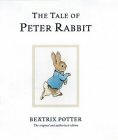
|
|
|
Her first story,
The Tale of Peter Rabbit , was conceived as a letter to
the children of her friend and former teacher, Annie Carter Moore.
It was so popular with them, that Ms. Potter was urged to create a
book which she self-published. It sold. With the proceeds from it
and several to follow, she bought two properties in the Lake
District: Hill Top , a rolling farm near Sawrey, England in
Lancashire and lovely Castle Cottage in the same area. During this
time, she met and married a solicitor, William Heelis.
|
| Hill Top House,
1976. |
|
|
The more time she spent in
the Lake District, the happier she became and for nearly ten years
she pursued her love affair with the people, plants, animals and
gentle rolling hills of the magnificent Lake District.
She blossomed in spirit,
independence and creativity. Her best books were written during
this period of her life. She produced book after little book for
the very young blending pictures and words into lyrical works of
beauty. Each book captures in miniature her delight in nature and
her love of language. She said herself she "copied nature"-- the
gentle, amiable nature of an English village.
|
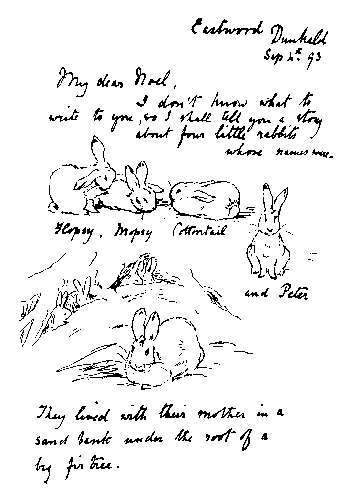 |
|
|
Visiting the town of
Sawrey in the Lake District and Ms. Potter's home at Hill Top is
to stroll through her books. Rhubarb patches, flower gardens,
low meandering stone walls, doorways, and garden gates are
mirrored so precisely that a her readers are at home there
immediately. |
| Rhubard
patch in the garden at Hill Top. 1976. |
|
|
The Tower Arms Inn which
sits on the edge of the tiny community of Sawrey is
captured in The Tale of Jemima Puddleduck. The doorway to
Hill Top
was made famous in the same book. Roly Poly Pudding and
The Pie in the Patty-Pan recorded the garden in full bloom. |
|
| |
Beatrix Potter in
the doorway at HillTop. |
Ms. Potter
is even said to have drawn the people of the community as animal characters in
her books. Mrs. Tiggy Winkle bears a striking resemblance to Ms. Potter herself
in her later years.
Beatrix Potter was in love
with her life in Sawrey and with the whole of HillTop. Her lyrical
delight is captured in her language as well as her illustrations. When
Peter Rabbit was caught in the gooseberry net, he was not asked
to simple free himself. Instead, "Some friendly sparrows flew to him
in great excitement and implored him to exert himself." Although the
words are larger than the normal vocabulary for the age child who will
hear the story, the meaning is clear in the urgency of the situation
and the tugging rhythm that the choice of words naturally
produces.
The Lake
District is as lovely today as when Miss Potter captured it in her books. The
two are bound to immortality, for they will both bring delight forever. In
The Tale of Tom Kitten, "Tom was quite unable to jump when walking upon his
hind legs in trousers." Anyone who has ever tried to dress a kitten for a
tea-party can see the humor. Tom's descendants still wander in the lush green of
the Lake District, intrepid, unclothed, and unaware of their connection to some
of the finest literature for children ever written.
|
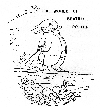 Beatrix Potter and the Lake District
Beatrix Potter and the Lake District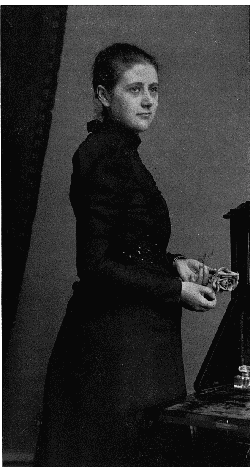




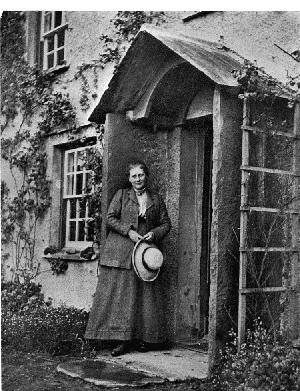
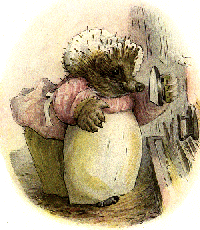
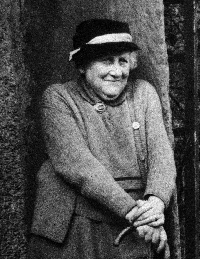
 /
/  Lane, Margaret.
The Tale of Beatrix Potter, New edition. New York:
Lane, Margaret.
The Tale of Beatrix Potter, New edition. New York:
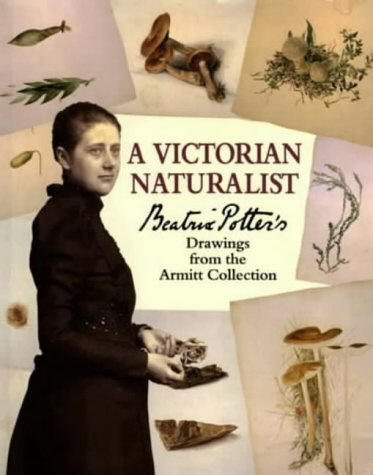 Jay, Eileen, et al. A Victoria Naturalist:
Beatrix Potter's Drawings from the
Jay, Eileen, et al. A Victoria Naturalist:
Beatrix Potter's Drawings from the